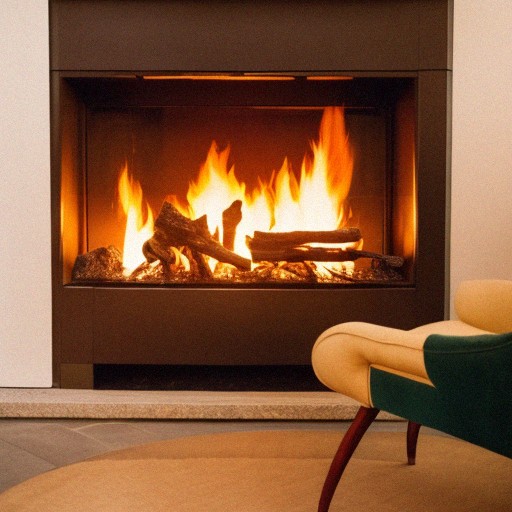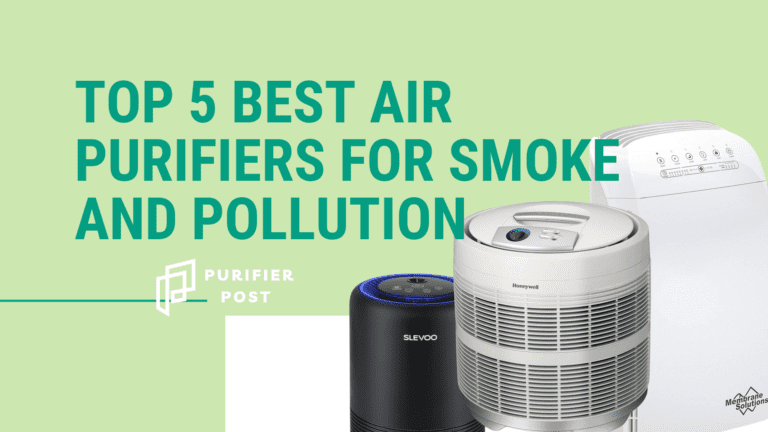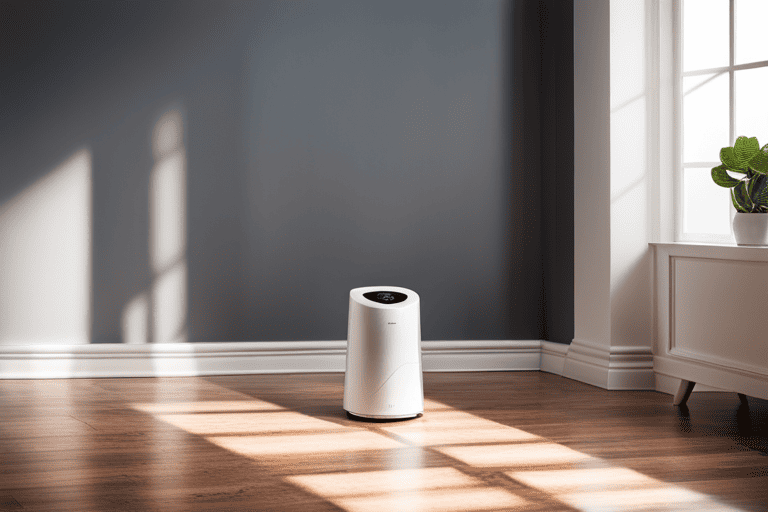Banishing the Lingering Fireplace Smoke Odor: Professional Tips for a Fresh and Smoke-Free Home
Fireplaces are a timeless and cozy addition to any home, providing warmth and ambiance during the colder months.
However, one downside that often accompanies the use of a fireplace is the lingering smell of smoke that can permeate throughout the entire house. This stubborn odor can be quite challenging to eliminate, leaving homeowners frustrated in their quest for a fresh and smoke-free living space.
Thankfully, there are professional tips available to banish this persistent fireplace smoke odor once and for all. In this article, we will explore expert advice and techniques that ensure your home remains free from the unwanted scent of smoke, allowing you to fully enjoy all the benefits of having a fireplace without any unpleasant odors lingering in its wake.
Understanding the Cause of Lingering Fireplace Smoke Odor
When it comes to banishing the lingering fireplace smoke odor, it’s crucial to understand its underlying cause. In most cases, this unpleasant smell is a result of incomplete combustion. As wood burns, carbon particulates are released into the air, and if not properly ventilated, these particles can settle on surfaces in your home.
The distinct and persistent smell of smoke is often attributed to creosote buildup in the chimney. Creosote is a sticky substance that forms when wood and other organic materials burn incompletely. Over time, this residue accumulates in the chimney flue and sticks to its walls. When you use your fireplace or stove again, the heat reactivates the creosote causing it to release an unmistakable smoke odor.
To effectively eliminate lingering fireplace smoke odors, professional chimney sweeps recommend taking preventative measures such as regular chimney cleaning and maintenance. By ensuring proper ventilation during fires and keeping your chimney clean from creosote buildup, you can enjoy a fresh and smoke-free home all year round.

Identifying the Source: Where is the Smoke Odor Coming From?
- Assess the fireplace: Begin by inspecting your fireplace for any signs of smoke residue or damage. Look for soot buildup, cracks in the chimney, or any other potential sources of odor.
- Check ventilation systems: Next, examine your home’s ventilation systems, including air ducts and filters. Dust and debris may have accumulated here, trapping smoke odors and spreading them throughout your house.
- Inspect upholstery and carpets: Don’t forget to thoroughly investigate upholstered furniture and carpeted areas near the fireplace. These materials can absorb smoke particles easily, leading to stubborn odors that linger.
Identifying where exactly the smoke odor originates from within your home is crucial in effectively eliminating it. By checking various key areas such as the fireplace itself, ventilation systems, and soft furnishings like upholstery and carpets, you can identify potential sources of lingering smoke smells. Remember to conduct a thorough inspection to ensure all potential problem areas are addressed before proceeding with odor removal techniques.
Preparing for Odor Elimination: Necessary Steps Before Getting Started
Clear the Area
Before you begin tackling the fireplace smoke odor, remove any furniture or decor from the immediate vicinity. This will allow for easier access to the area and prevent anything from becoming damaged or stained during the cleaning process.
Ventilation is Key
Open up windows and doors in the room to promote proper airflow. This will help to dissipate any lingering odors and freshen up the space faster.
Gather Your Cleaning Supplies
Make sure you have all necessary cleaning supplies on hand before starting. This may include a vacuum cleaner with upholstery attachments, baking soda, vinegar, dish soap, and a clean cloth or sponge.
Test an Inconspicuous Area
To ensure that your chosen cleaning solution does not damage your furniture or walls, test it in an inconspicuous area first. Apply a small amount of solution to an unseen spot and check for any negative reactions such as discoloration.
By following these essential steps before embarking on your mission to banish fireplace smoke odor, you can maximize efficiency while minimizing risk of damage or unwanted outcomes.
Deep Cleaning Techniques for Removing Smoke Odor from Furniture and Upholstery
Smoke odor can penetrate deep into furniture and upholstery, leaving behind an unpleasant lingering smell. Here are some professional tips to help banish that stubborn smoke odor:
- Baking Soda for Absorption:
- Sprinkle baking soda generously over the affected furniture or upholstery.
- Allow it to sit for at least a few hours or overnight before vacuuming it thoroughly. – Baking soda acts as a natural absorbent, helping to neutralize the smoke particles and eliminate odors.
- Vinegar Solution for Deodorizing:
- Create a solution using equal parts of white vinegar and water in a spray bottle.
- Lightly mist the affected areas with this solution, ensuring not to saturate them completely.
- Vinegar is known for its deodorizing properties, which can help remove smoke smells effectively.
- Professional Steam Cleaning:
- Consider hiring professionals who specialize in steam cleaning services.
- They have specialized equipment and expertise to deep clean your furniture and upholstery thoroughly.
- Steam cleaning can reach deeper layers of fabric where smoke particles might have settled, effectively eliminating any traces of smoke odor.
Remember, consistency is key when trying to eliminate smoke odor from furniture and upholstery. Repeat these techniques regularly until you achieve a fresh-smelling home free from lingering fireplace smoke odors.
Tackling the Walls and Ceilings: Effective Methods for Smoke Odor Removal
- Clean thoroughly with vinegar solution: Mix equal parts white vinegar and water in a spray bottle, and then apply it to the walls and ceilings affected by smoke odor. Use a clean cloth or sponge to wipe away any residue.
- Paint over the stains: If cleaning doesn’t completely remove the smoke odor, consider painting your walls and ceilings with special primer designed to seal in odors, such as a shellac-based primer.
- Replace carpeting or deep clean it: Carpets can trap smoke odors, so if you have carpeted floors that are affected by fireplace smoke smell, you may need to replace them entirely or hire professional cleaners who specialize in removing stubborn odors.
- Consider hiring professionals for thorough restoration services: If all else fails or if your home has experienced extensive fire damage causing severe smoke odor issues throughout multiple rooms, contacting professional restoration experts could be necessary for effective elimination of lingering smells.
Remember:
- Open windows during the cleaning process to allow fresh air circulation.
- Make sure to use appropriate personal protective equipment (PPE), such as gloves and face masks when dealing with strong chemicals or handling heavy-duty cleaning tasks.
- Be patient; effectively banishing fireplace smoke odor can take time depending on its severity
Eliminating Lingering Smoke Odor from Carpets and Rugs
Carpets and rugs often bear the brunt of lingering smoke odor from a fireplace. To rid your home of this stubborn smell, follow these professional tips:
- Vacuum regularly: Start by thoroughly vacuuming your carpets and rugs to remove any loose soot or ash particles trapped within the fibers.
- Baking soda magic: Sprinkle baking soda generously over the affected areas, allowing it to sit for several hours before vacuuming again. Baking soda helps absorb odors effectively.
- Hydrogen peroxide solution: Mix one part hydrogen peroxide with two parts water in a spray bottle. Lightly mist the carpet or rug with this solution, being careful not to saturate it. Allow it to air dry completely.
By following these simple steps, you can banish that lingering smoke odor from your carpets and rugs, ensuring a fresh and smoke-free home for you and your family.
Expert Tips for Deodorizing Fabrics and Curtains
- Wash fabrics regularly: Smoke particles can settle into fabric fibers, causing odors to linger. To remove these lingering odors, wash your curtains, cushions, and other fabric items regularly to keep them fresh.
- Use vinegar or baking soda: These household staples are effective in neutralizing smoke odor. Mix equal parts vinegar and water in a spray bottle and lightly mist the fabrics. Alternatively, sprinkle baking soda on the affected areas before vacuuming it up after a few hours.
- Air out the room: Open windows and create airflow by using fans or air purifiers to help dissipate the smoky smell from your home.
By following these expert tips for deodorizing fabrics and curtains exposed to fireplace smoke, you can effectively eliminate unwanted odors from your living spaces without resorting to harsh chemicals or expensive treatments. Incorporating these simple techniques into your regular cleaning routine will ensure a fresh and smoke-free home ambiance that’s enjoyable for everyone.
Preventing Future Smoke Odor: Maintenance and Prevention Techniques
Regular cleaning and maintenance can go a long way in preventing future smoke odor in your home:
- Clean out the chimney regularly: Hire a professional chimney sweep to clean your chimney at least once a year. This will help remove any soot or creosote buildup that could contribute to lingering smoke odors.
- Properly store firewood: Store firewood outside, away from the house, to prevent moisture buildup and mold growth. Damp firewood can produce more smoke when burned and contribute to lingering odors.
- Use proper burning techniques: Burn only dry, well-seasoned wood in your fireplace or stove. Wet or green wood will produce more smoke, leading to stronger odors.
Implementing these maintenance and prevention techniques can greatly reduce the likelihood of having future smoke odor issues in your home. By taking proactive measures, you can enjoy a fresh and smoke-free living environment throughout the year.







3 Comments